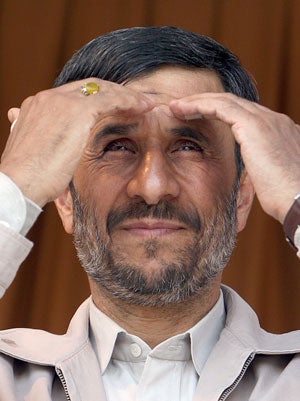While the Obama Administration remains wedded to the diplomatic engagement of Iran, Iran remains wedded to terrorism, including plots against U.S. diplomats. The Washington Post reported earlier this week that U.S. officials are accumulating mounting evidence that Iran ordered terrorist attacks on U.S. diplomats stationed in Azerbaijan, as well as members of their families. The Azerbaijan plot appears to have been part of a larger Iranian campaign to assassinate foreign diplomats, including Israeli and Saudi diplomats, in at least seven countries over 13 months.
Some of the members of the terrorist ring arrested by Azerbaijani authorities were also members of criminal networks. This pattern, which helps give Tehran plausible deniability for the operation, has been seen in previous Iranian terrorist plots, including the foiled plot revealed last October to assassinate the Saudi ambassador to the United States by bombing his favorite Washington, D.C., restaurant. That plot unraveled after an Iranian agent tried to enlist a member of a Mexican drug cartel, who turned out to be a confidential informant for the U.S. Drug Enforcement Administration.
U.S. intelligence agencies assessed that Iran is increasingly willing to launch a terrorist attack on American soil. Despite wishful thinking in some quarters that the Washington plot was a rogue operation, the involvement of high-ranking officers of Iran’s Islamic Revolutionary Guard Corps indicates that responsibility lies at the highest levels of the Iranian regime.
A noteworthy aspect of the Washington plot was the involvement of members of the Quds Force, the elite special operations unit within the Revolutionary Guards that serves as the spearhead of Iran’s Islamist revolution and functions as a liaison with foreign revolutionaries and terrorist groups. Abdul Reza Shahlai, a key Quds Force commander implicated in the plot, also led a terrorist operation in Iraq that killed five American servicemen. The Quds Force also supported attacks in Iraq by radical Shia militias and provided sophisticated explosive devices that killed many American soldiers in Iraq.
The revolutionary Shia Islamist regime in Tehran sees itself as the leader of the Islamic world and the champion of its struggle against the West, particularly the United States. Since Iran’s 1979 revolution, its leaders have used terrorism to defeat their internal rivals, consolidate power, advance Iran’s foreign policy goals, intimidate smaller countries, and expel Western influence from the Middle East.
The Revolutionary Guards have long played a key role in Iran’s terror strategy. They were directly involved in establishing, training, arming, and directing the operations of Hezbollah, the Lebanese Shia Islamist revolutionary organization. Iran used Hezbollah as a surrogate in many terrorist attacks, including the 1983 bombing of the U.S. Marine barracks in Beirut, Lebanon—the bloodiest terrorist attack in U.S. history before 9/11.
Iran’s Revolutionary Guards also played a role in the June 25, 1996, bombing of the Khobar Towers housing complex in Saudi Arabia, which killed 19 U.S. servicemen.
Iran’s long history as the world’s foremost state sponsor of terrorism is a major reason why the United States cannot permit it to develop one of the world’s most terrifying weapons—a nuclear bomb. Unfortunately, while the Obama Administration has dispatched diplomats to defuse the confrontation over Iran’s nuclear weapons program, Tehran has dispatched terrorists to target U.S. diplomats.
